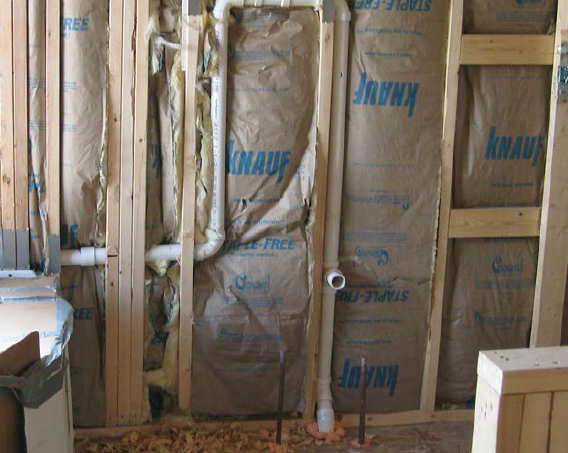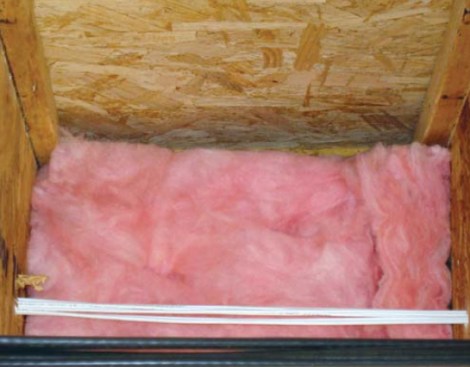
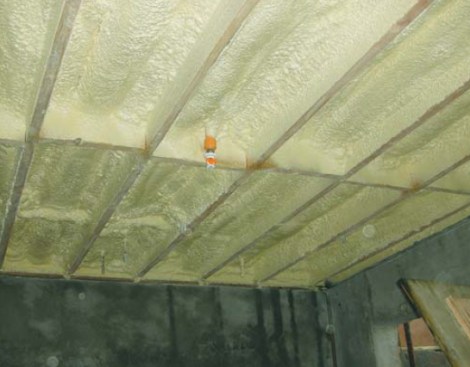
Living Spaces Over Garages
Living spaces over garages create conditions that demand careful attention to insulating the floor. Yet it is difficult to support the insulation in this cavity, and oftentimes the insulation falls onto the garage ceiling. This separation between the insulation and the living space floor creates a thermal bypass that compromises the value of the insulation. Air easily infiltrates in at the band-joist area over the top of the insulation, which scavenges away heat. This often freezes plumbing pipes, creates cold floors, and can lead to major mold and water damage. Builders often try to solve the problem by supplying forced-air heat near the plumbing, but this only succeeds in pressurizing the space with warm, humid air. As this air exfiltrates through the exterior cracks, it can condense and lead to even worse moisture and mold problems at the band-joist areas.
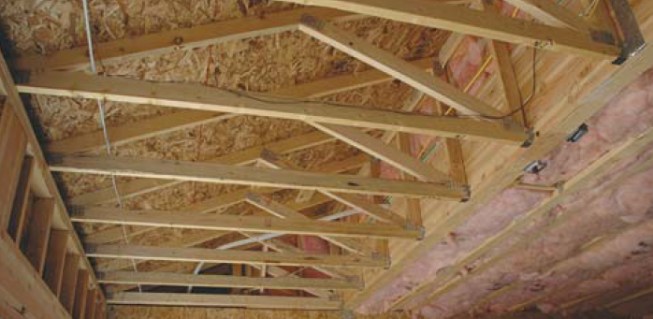
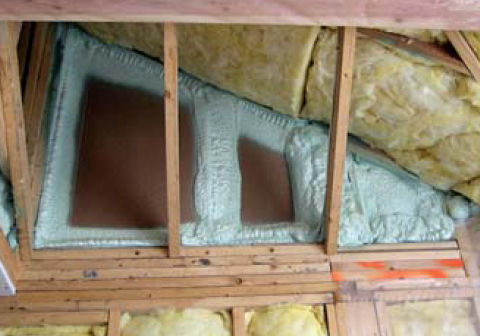
Attic Knee Walls
These are areas where the insulation on the back side of unsheathed walls is exposed to outdoor temperatures and airflow. They are often adjacent to ventilated attic areas. The Energy Star Thermal Bypass Inspection Checklist requires that an air barrier be placed on all sides of the insulation. This means that the back sides of knee walls need to be sheathed and sealed. Thin-profile cardboard sheathing with ccSPF works well here. Since ccSPF is air impermeable, the insulation does not have to fill the entire cavity, and it meets the air barrier requirement. Some codes require R-19 insulation, which is difficult to do in a 3 1/2-inch space with batt insulation, but 2 inches of ccSPF provides about R-19.5.
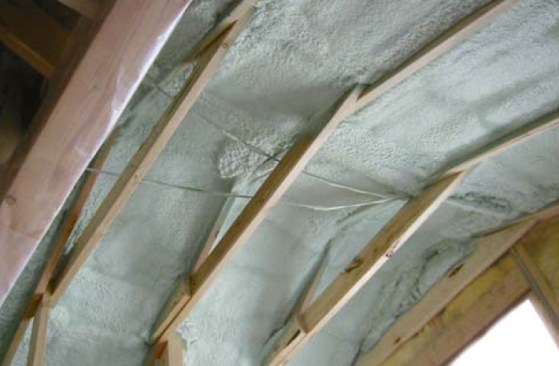
Sloping Roof Areas
The sloping areas in a cathedral ceiling can be the sites for significant thermal bypasses. These areas are not only difficult to insulate but are difficult to ventilate. Yet ccSPF solves both problems. Placing ccSPF directly on the underside of the roof deck also creates a secondary rain barrier, and because of ccSPF’s high R-value and low permeability, moisture is not likely to condense on its surface, eliminating the need for cavity ventilation.
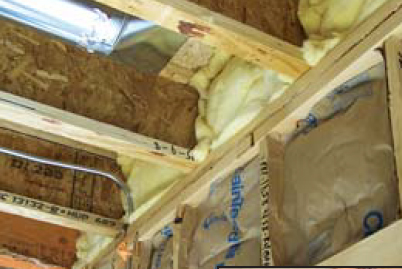
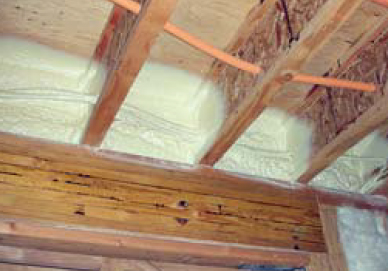
Band-Joist Areas
The band-joist area is typically a major site for air infiltration. These areas are usually very poorly insulated, causing one of the most significant thermal bypass areas. If the home is under a positive pressure (air pushing out from inside) in a heating climate, the air is likely to be at a high humidity level. This can cause frost, and eventually mold, to build up on the back side of the band joist. In a cooling climate that is under negative pressure (air pulled inward — a condition that’s commonly caused by leaky HVAC ducts), this can pull hot, humid air from outside, where it is likely to condense and lead to mold problems. The sealing properties of ccSPF will reduce these air-infiltration and energy-loss problems in this troublesome area.
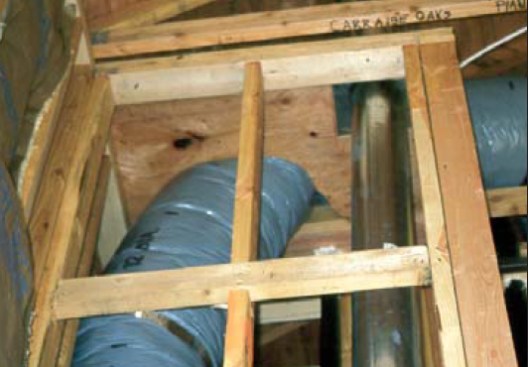
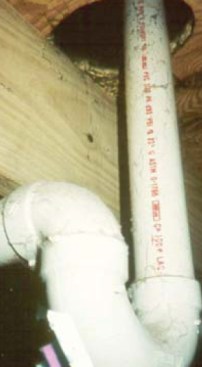
Attic and Crawlspace Bypasses
Attic and crawlspace bypasses are penetrations into the living spaces. Pipes, ducts, flues, and electric wires are the most common reason for these penetrations, and the best way to seal them is often (but not always) with ccSPF. Because ccSPF expands and seals, it does an excellent job of filling voids that allow conditioned air to escape. However, ccSPF should not be used to seal around high-temperature areas such as combustion appliance flues.
